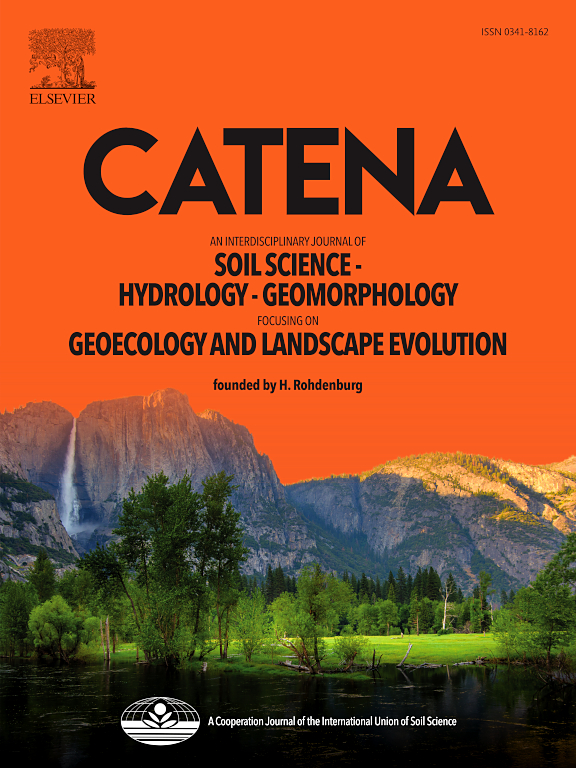Soils formed from non-organic limnic materials and the anthropic influence on their classification, Texcoco, Mexico
IF 5.4
1区 农林科学
Q1 GEOSCIENCES, MULTIDISCIPLINARY
引用次数: 0
Abstract
Soils formed from organic limnic materials (LM) are well documented, but few studies have considered inorganic LM, let alone their evolution into soils. The artificial drying of the ancient Lake Texcoco began more than a century ago, favoring the upwelling of hypersaline limnic sediments with amorphous volcanic materials and ostracods. The objectives are to scientifically classify soils formed from non-organic limnic materials that human activities have influenced and to designate their soil-forming processes according to their scientific names, as Bockheim and Gennadiyev (2000) have indicated. The soils formed in the former lake are complex and heterogeneous, with more than ten genetic characters per horizon; for example, the same horizon can be named 5BLtnqsez (ST) or 5Ctnzcqgαβγλ (WRB). The ST indicated the formation of Entisols, Inceptisols, Andisols, and Mollisols. The WRB designated the formation of Solonchaks, Fluvisols, Regosols, Solonetz, Phaeozems, Calcisols, Anthrosols, and Technosols with up to 11 qualifiers. Soil-forming processes are Salinization, Solonization, Solodization, Melanization, Anthrosolization, Calcification, Gleyization, and Sulphurization, and most of the characteristics are represented in the WRB. However, despite the valuable information provided by this study on the soil classification of non-organic limnic materials, further suffixes and criteria are required in the classification system to differentiate them from other diagnostic materials.
由非有机石灰质形成的土壤及其对分类的人为影响,墨西哥特斯科科
本文章由计算机程序翻译,如有差异,请以英文原文为准。
求助全文
约1分钟内获得全文
求助全文
来源期刊

Catena
环境科学-地球科学综合
CiteScore
10.50
自引率
9.70%
发文量
816
审稿时长
54 days
期刊介绍:
Catena publishes papers describing original field and laboratory investigations and reviews on geoecology and landscape evolution with emphasis on interdisciplinary aspects of soil science, hydrology and geomorphology. It aims to disseminate new knowledge and foster better understanding of the physical environment, of evolutionary sequences that have resulted in past and current landscapes, and of the natural processes that are likely to determine the fate of our terrestrial environment.
Papers within any one of the above topics are welcome provided they are of sufficiently wide interest and relevance.
 求助内容:
求助内容: 应助结果提醒方式:
应助结果提醒方式:


